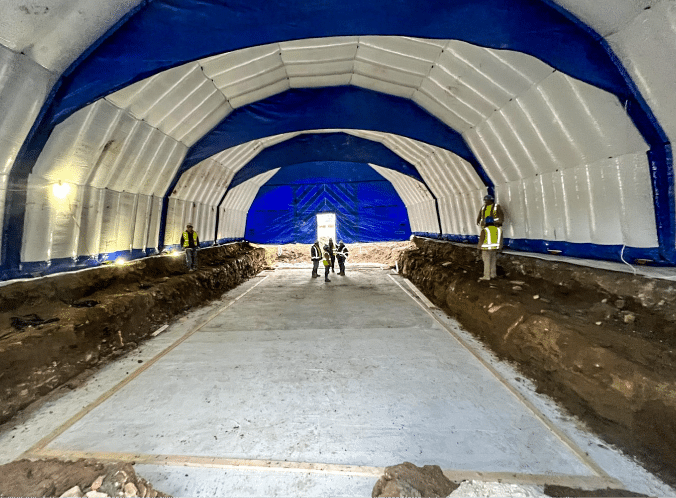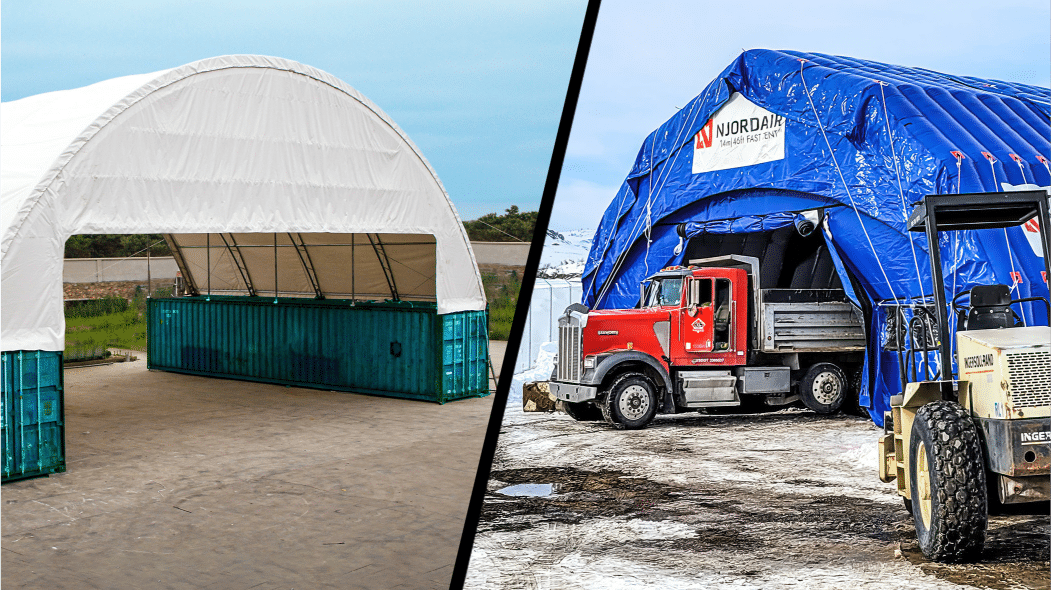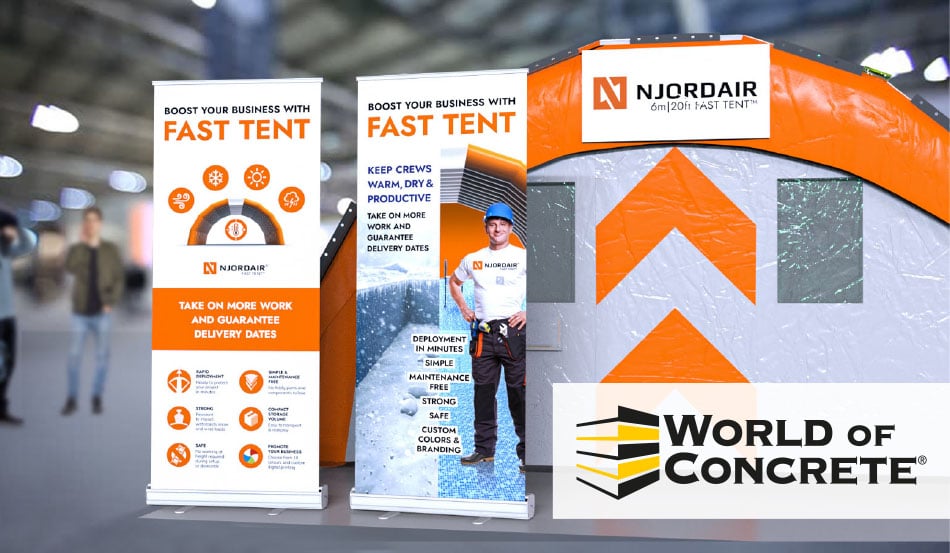Air Supported Structures – How Do They Compare?

Njordair specialise in the innovative use of air structures to create temporary weather protection & containment solutions to the construction industry. But, what exactly is an air structure? Here is a quick introduction.
Inflatable buildings are lightweight structures that achieve structural stability by using internal air pressure to put tension into the envelope or skin of the building. This gives the structure a pre-stress that enables it to resist applied forces.
Although it is difficult to compete with structures made of conventional materials such as stone, metal, concrete or wood, the specific properties of air supported structures make them excellent candidates for a variety of temporary applications.
“The air structure is the most efficient structural form available to date….no other type of structure has the potential of providing free-span coverage for so large an area…. as the air structure is constructed of light-weight flexible materials, it can be made easily portable and lends itself readily to the design of demountable or removable structures.” Walter Bird
Types of Air Buildings
Air Supported Structures
Typically these are single layer fabric membrane enclosures, anchored to the ground around the perimeter and held up by low pressure air pumped into the structure via blowers or fans. This type of structure needs airlocks at entry / exit points (often with two sets of doors) to prevent a sudden drop of pressure. The internal pressure can be increased to resist strong winds or snow loads. These are very popular with sports venues around the world.
Air Cell Structures
An air-cell inflatable building is a structure built from two layers of membrane interconnected with ties or webs. The gap or cavity between the layers is then pressurised with air to create a rigid ‘double skin’ structure. In this way, the air contained within the walls becomes a structural part of the building.
Air Beam Structures
Closely related to an air cell structure, an air beam is an air inflated tube that acts as a beam or arch to give support to a fabric skin. Using a series of co-joined air beams, large spans can be created. Air beams can be either high or low pressure components.
Low pressure – This type is a twin walled fabric structure that is inflated to form a rigid shell structure. Low pressure air beams typically require a constant air source to top up the pressure to the range of 0.4-0.6 Kn/m2.
High pressure – High pressure air beams are more akin to a pneumatic tyre where the beam is pressurised. These beams are ‘sealed’, so that once inflated to 2.5-15KN/m2 they do not require constant air, but just occasional top up. This can be done automatically.
Because air beam and air cell structures only require pressurised air between the cavities of the walls, they don’t require an air lock because the inside of the building as it a normal atmospheric pressure. At Njordair we specialise in the implementation of air cell and air beam buildings.
Advantages of inflatables
- fast set up; by pressurising the air, it becomes a lightweight yet structural part of the building. Inflatables are simple by design. They require much fewer mechanical parts than a traditional framed structure.
- low cost installation; Typically, an inflatable building requires no permanent foundations. It will however require anchoring by the use of ground anchors / stakes or by using kentledge or water ballast.
- compact storage volume; When the building needs to be moved, the air is allowed to escape allowing an entire building to be packed into a very small volume compared with it’s inflated size which means it is relatively easy to transport to a new location and re-inflate with minimal labour and space requirements.
History
The first structures that can be described as inflatable buildings were built for the US military to protect early warning radars in the 1950’s. These buildings prove themselves in severe Alaskan environments.
The military, and emergency services have continued to be one of the biggest ‘adopters’ of air supported structures has been. Typically used for field hospitals, command and control centres, these buildings have been tried & tested in some of the most extreme and hostile environments worldwide.
Inflatable structures went through prolific development in the 1960’s and 1970’s but in recent years, due to technical advances in materials, there has been a return of this technology – particularly in the field of rapid deployment protective shelters.
Njordair specialise in the supply of rapid deployment temporary weather protection for industrial, technical and commercial applications.



